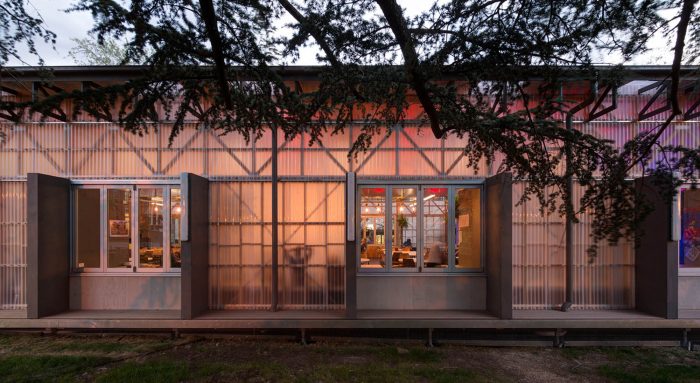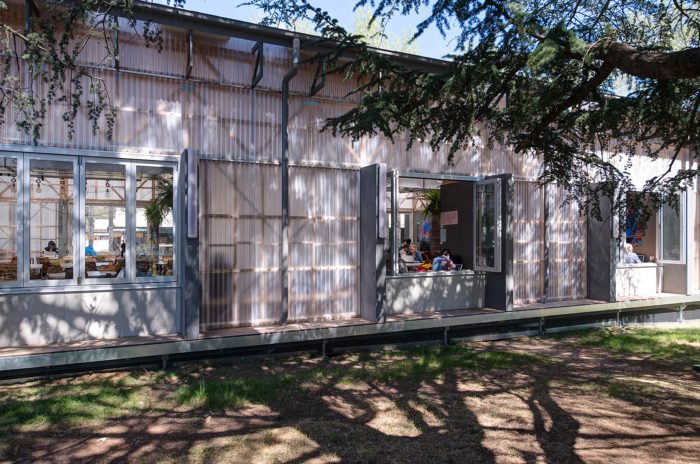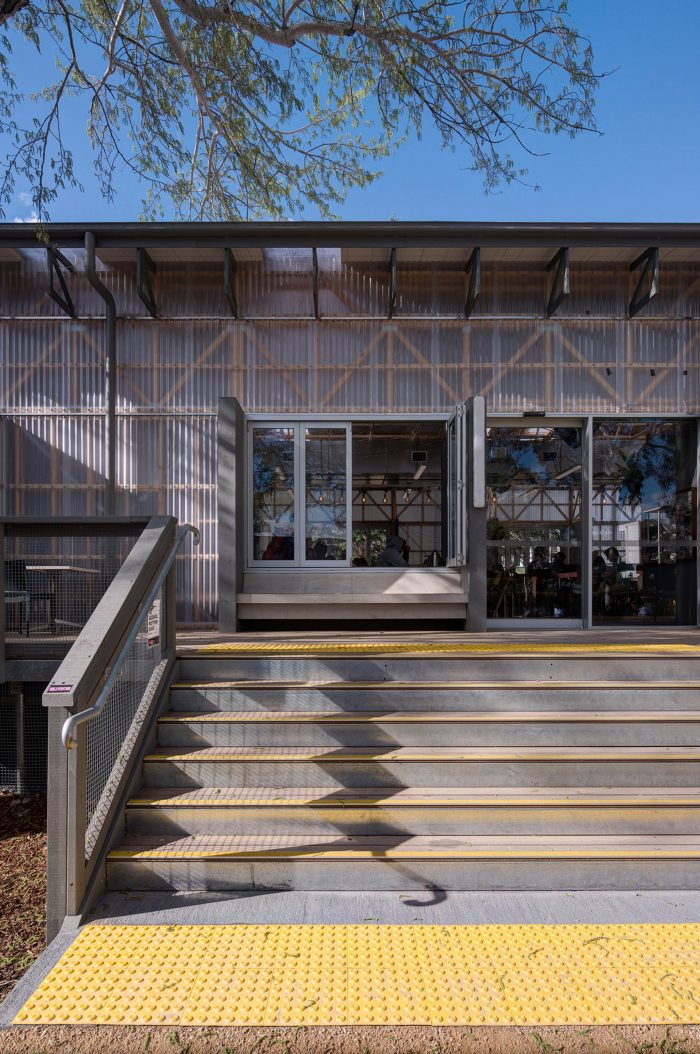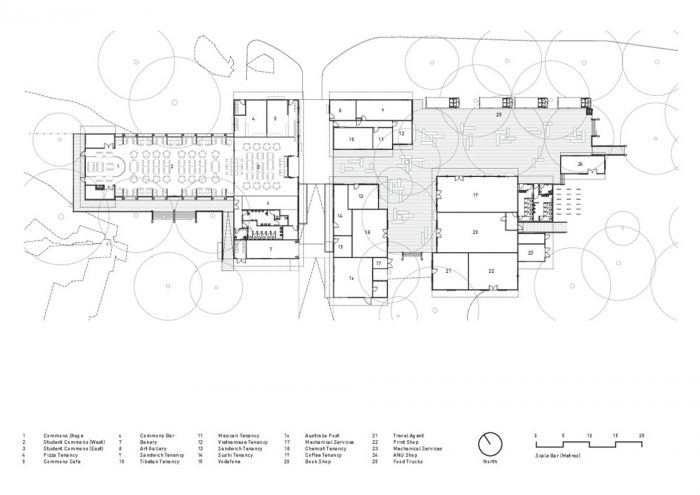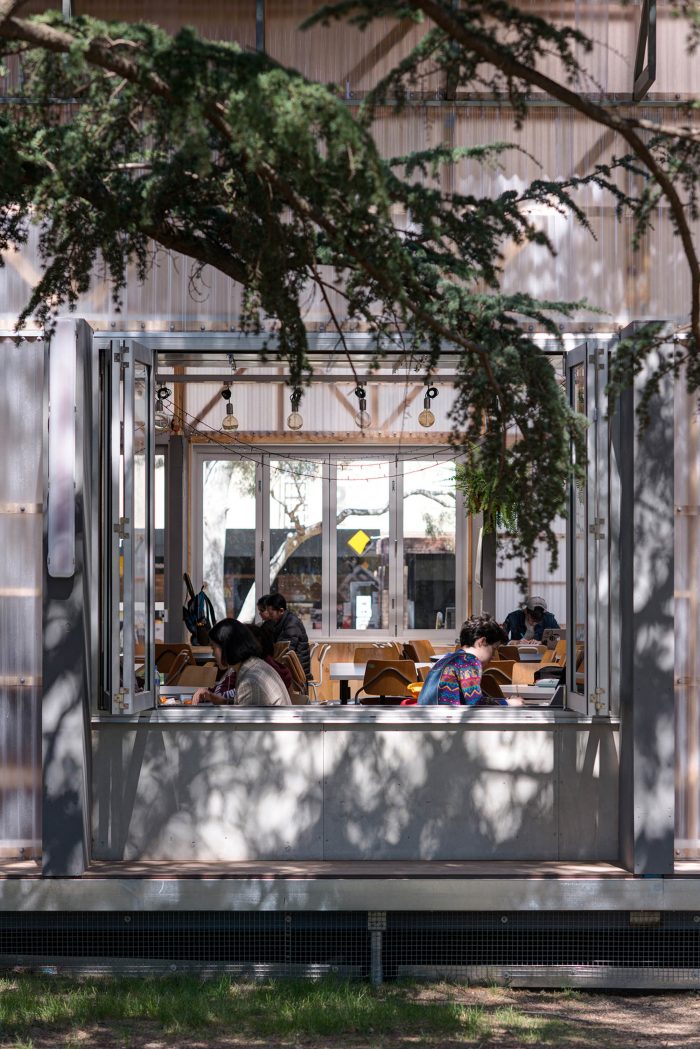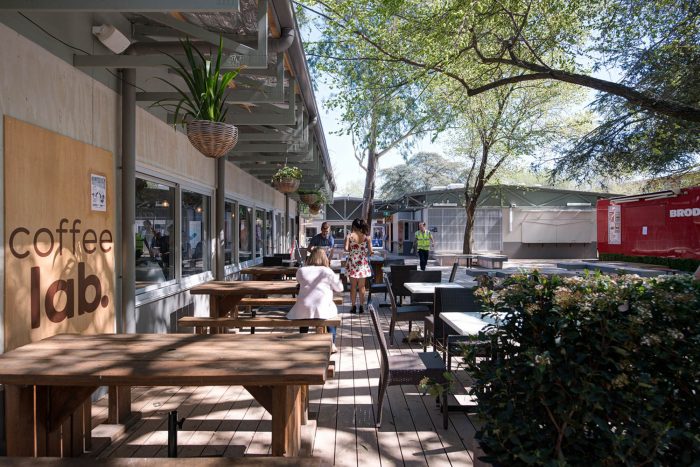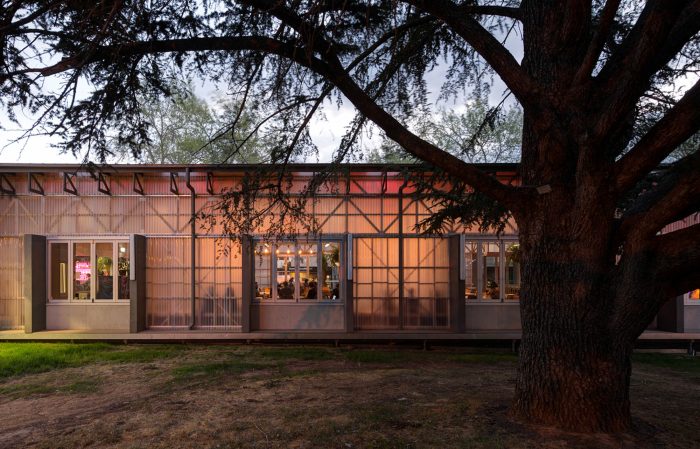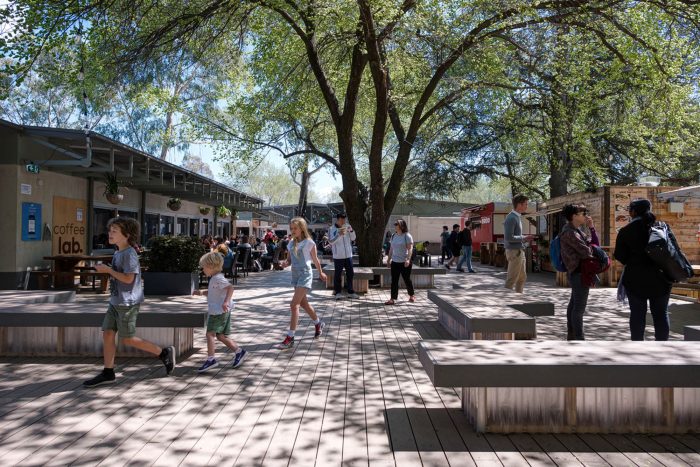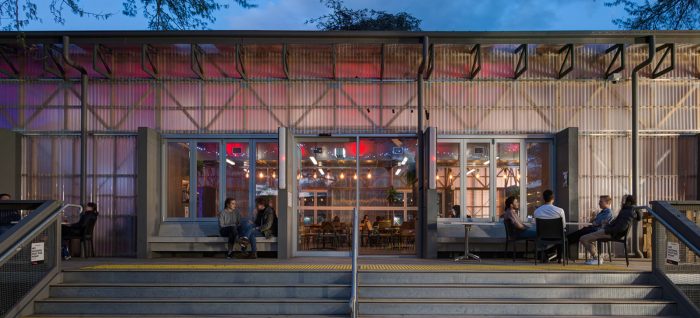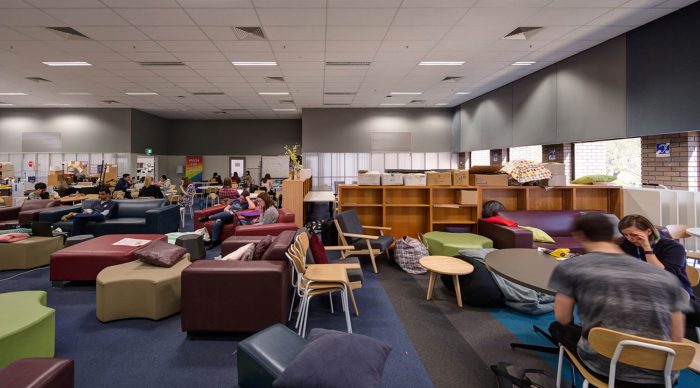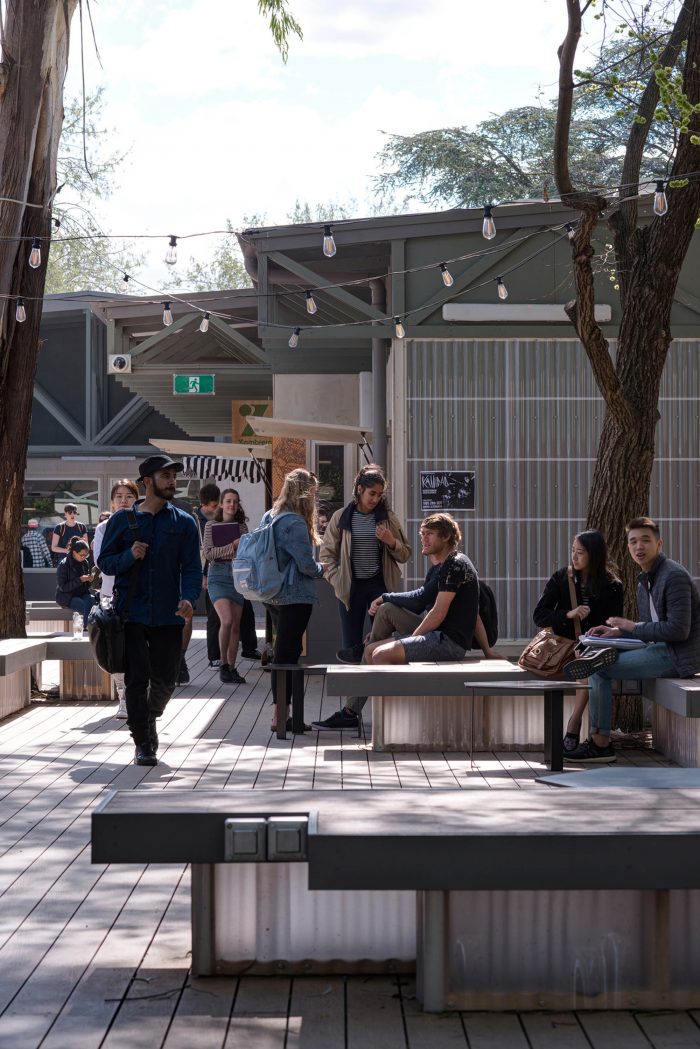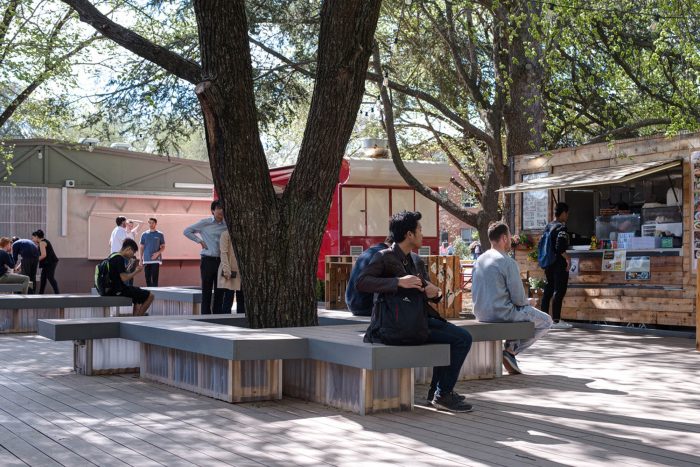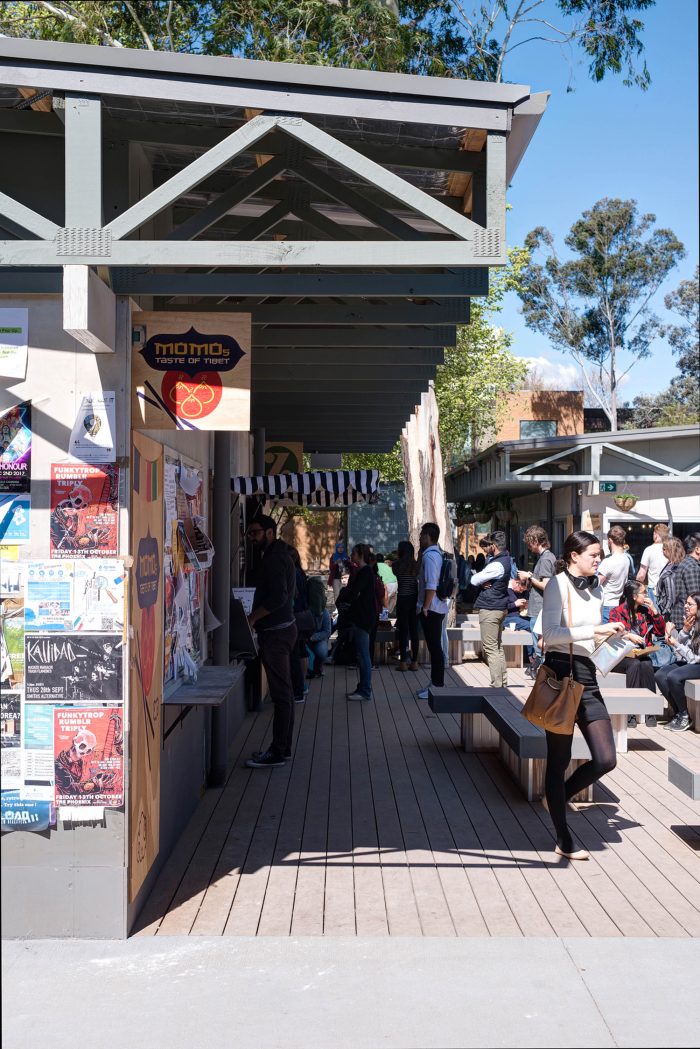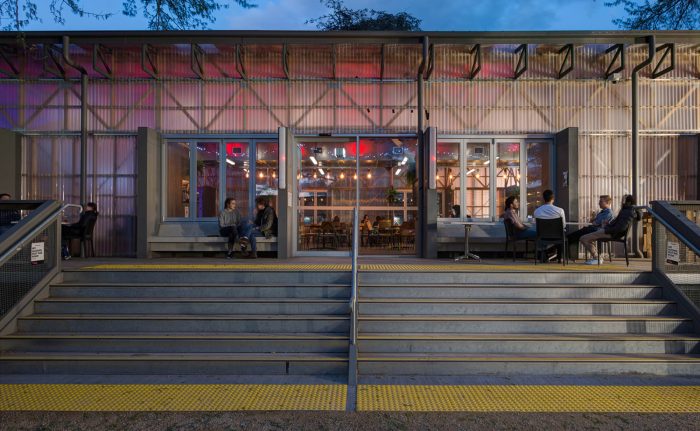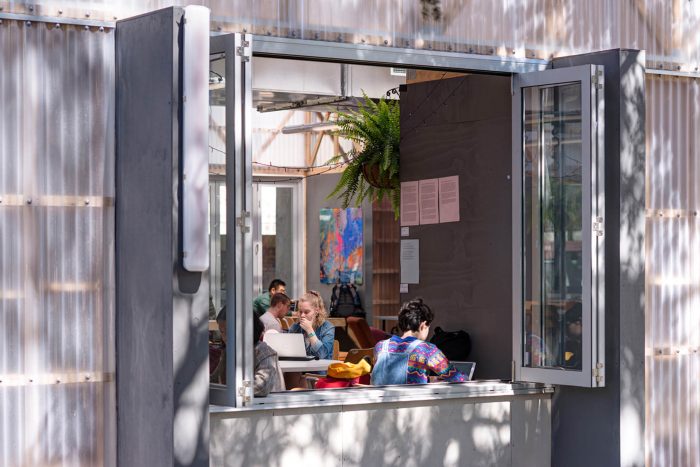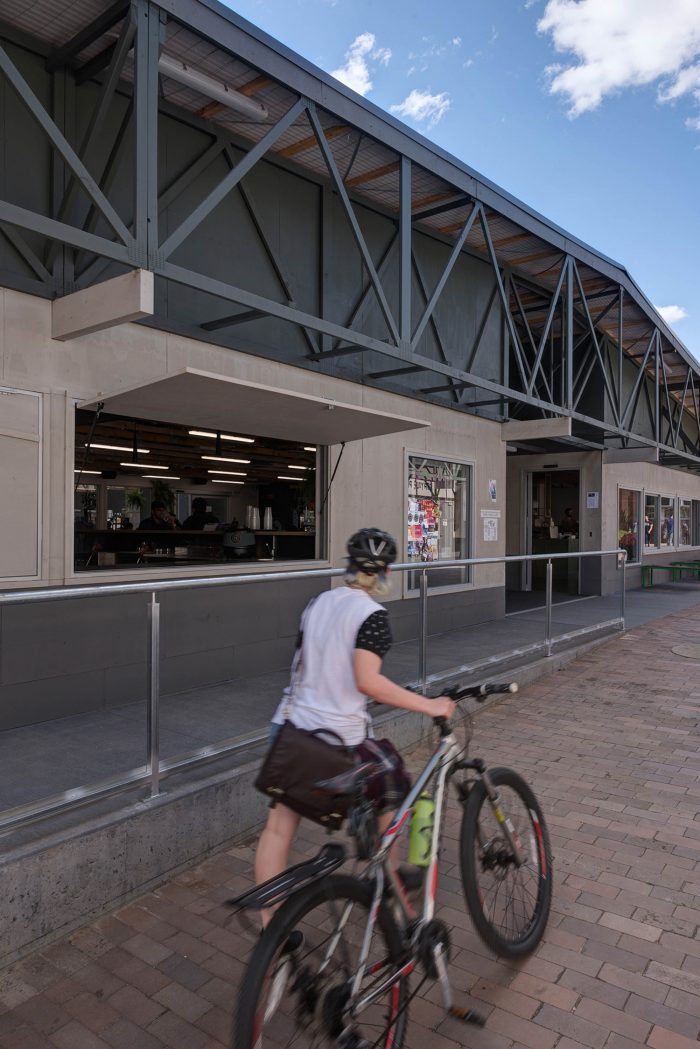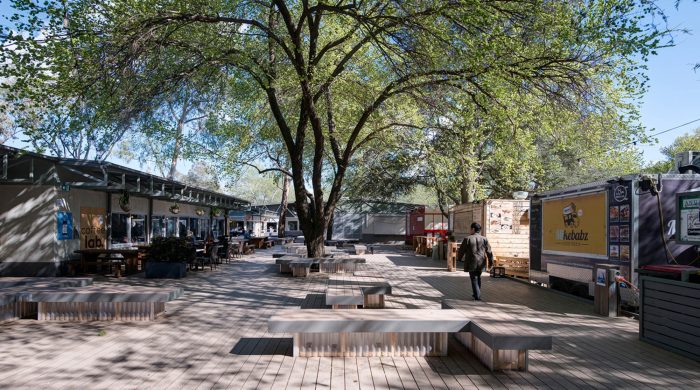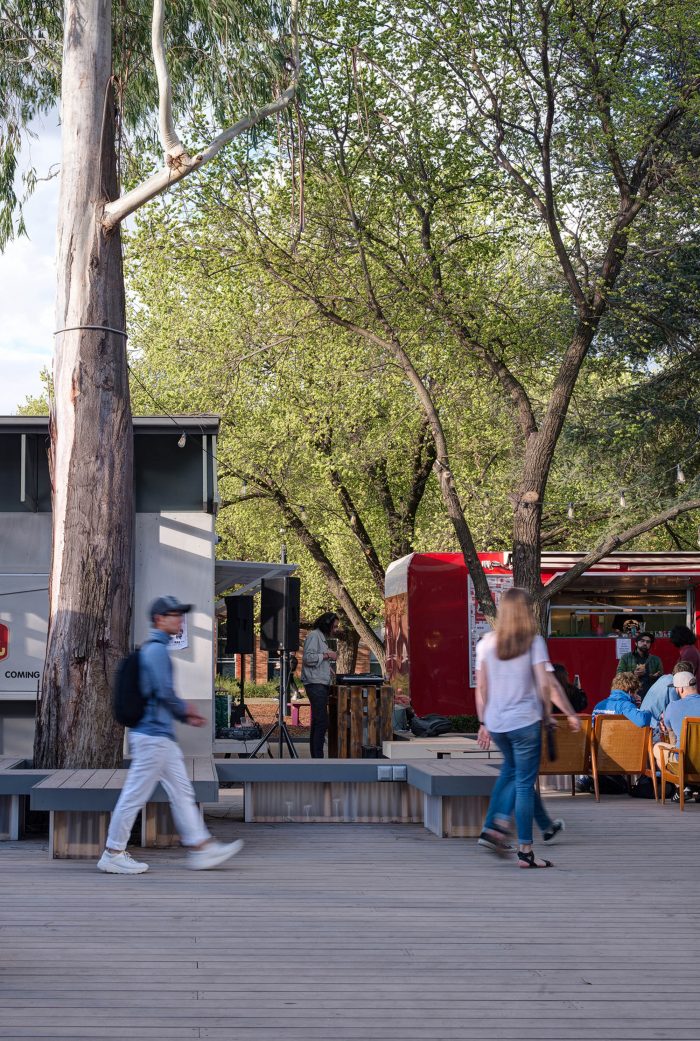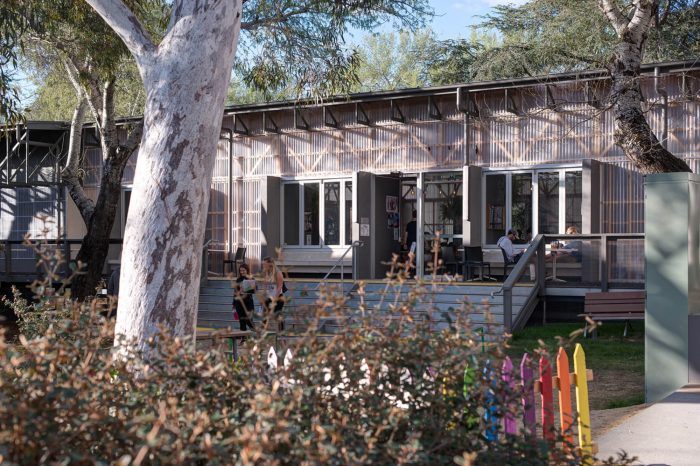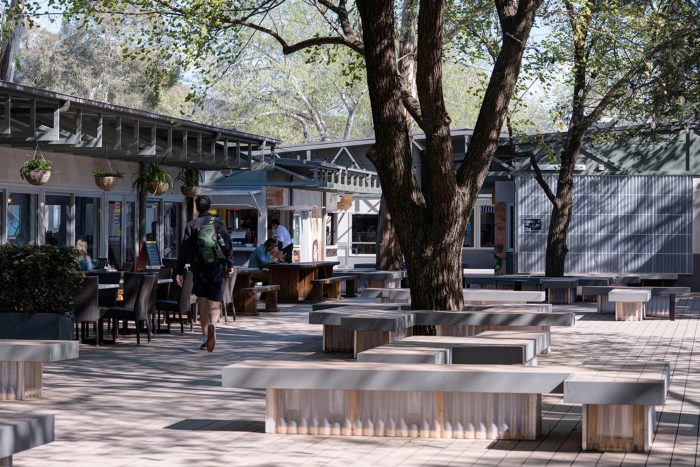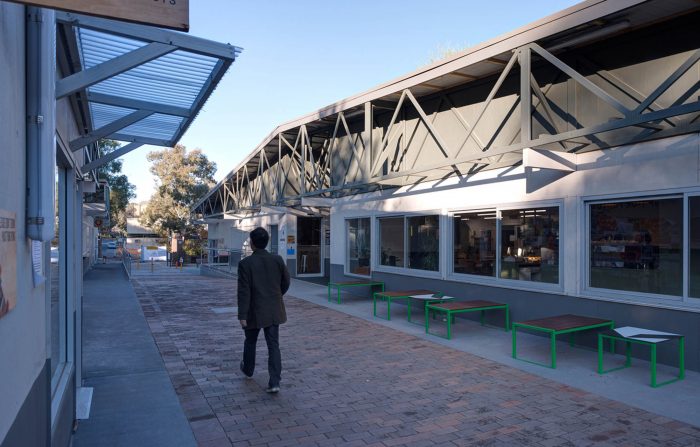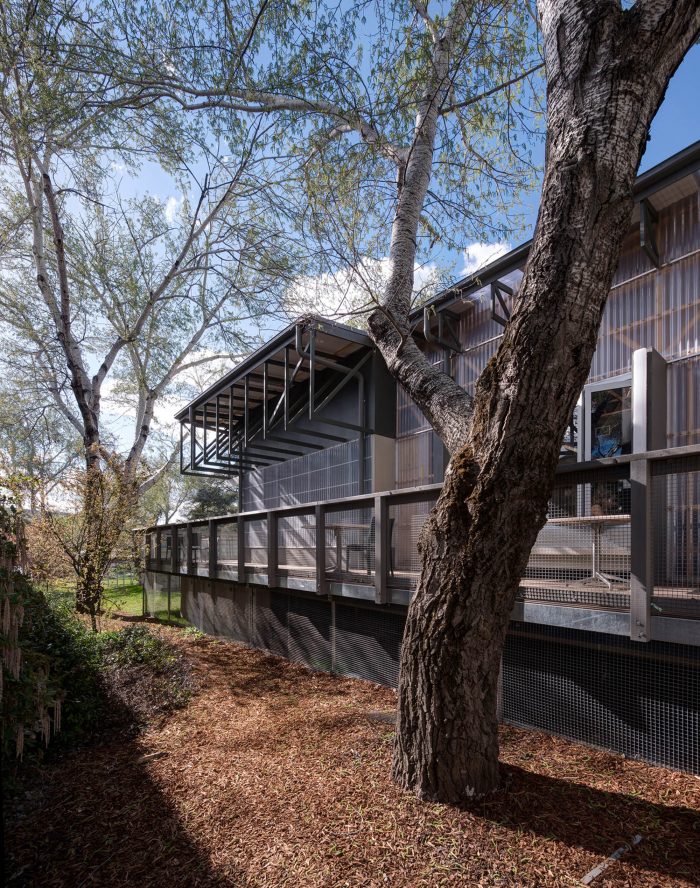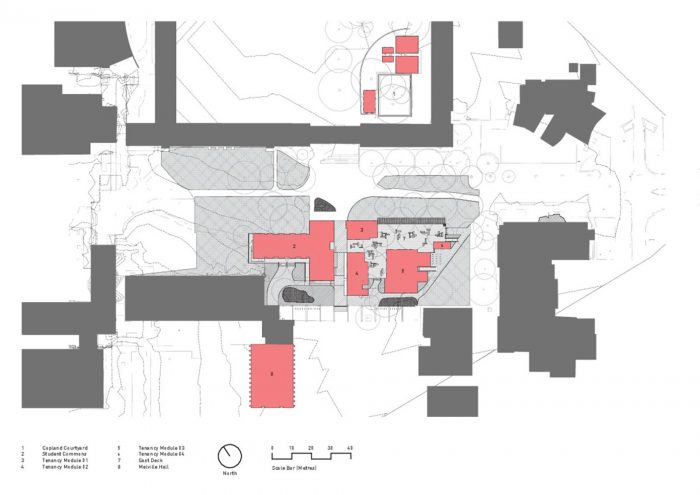ANU Pop-Up Reunion Village由OCULUS和Craig Tan Architects联合设计,在新的Union Court开发项目中作为ANU校园的临时中心,为期18个月。作为一个连接学生的日夜环境,这个村子容纳了ANU的零售核心,包括学生服务,学生组织,公共空间,以及食品和饮料的临时搬迁。
Designed as the temporary heart of the ANU campus for 18 months during the redevelopment of the new Union Court development, the ANU Pop-Up Reunion Village was designed by OCULUS and Craig Tan Architects in association. Conceived as a connective day and night environment for the students, the village accommodates the temporary relocation of ANU’s retail core, including student services, student organisations, common spaces, and food and beverage.
村庄位于绿树成荫的大学大道旁,以吸引来自大学和堪培拉市的观众,村庄由2400平方米的封闭空间和1600平方米的平台空间组成,被设想为ANU和城市之间的桥梁。该村由四个相互关联的部分组成,以南北主干道和大学大道的交汇处为中心。对于经济而言,这些区域包括新建、装修,甚至工地棚户区的混合。
Located adjacent to the tree lined University Avenue to attract an audience from the University and Canberra city, the village consists of 2400sqm of enclosed space and 1600sqm of decking space, and is envisioned as a bridge between ANU and the city. The village is composed around four interrelated sections centred at the confluence of a primary North-South path, and University Avenue. For economy, these comprise a mixture of new-build, fitout, and even site shed accommodations.
第一个区域是公共区域,它容纳了一个大型的封闭式多功能空间,以及相关的租赁和设施。它由透明的聚碳酸酯包覆,记录了昼夜间斑驳的光线变化,并在晚间活动中像灯塔一样发光。外立面的翼墙鼓励人们占据边缘和相邻的空间。
The first area is the Commons zone, which accommodates a large enclosed multi-purpose space, with associated tenancies and amenities. Clad in diaphanous polycarbonate, it registers the diurnal changes of dappled light, and glows as a beacon during evening events. Wing walls to the facade encourage occupation of the edge and the adjoining spaces.
东甲板通过一条隐含的东西轴线与东面相连,并坐落在树木之中。东甲板由四个亭子组成,混合了零售和食品,东甲板的配置是为了保护树木,并鼓励更宽松的氛围。四辆固定的餐车界定了北面的平台周边,与南面的咖啡馆一起,在树冠下构筑了一个充满活力的公共空间。长椅群为平台增添了活力,并通过微妙的距离变化鼓励偶然的社交接触。南面的梅尔维尔大厅的改造再利用,为本科生和研究生组织提供了一个安静的学习区。在北面,科普兰院子的棚子被配置在一个广场周围,里面有更多的学生服务。
Linked by an implied East West axis to the East and nestled in amongst the trees is the East Deck. Comprising a cluster of four pavilions with a mixture of retail and food, the East Deck has been configured to preserve the trees and encourages a looser atmosphere. Four permanent food trucks define the Northern deck perimeter, and with the café to the South, frame an energised public space under the tree canopy. Bench clusters animate the deck and encourage serendipitous social encounters through subtle shifts in proximities. The adaptive re-use of Melville Hall to the South accommodates the undergraduate and postgraduate student organisations with an accompanying quiet study area. To the North, the Copland Courtyard site sheds are configured around a square which houses additional student services.
公用区和东甲板是国内预制木墙板技术的一个实践。位于高架的Modwood平台上,将服务输送到地面之上,这些简陋的木质框架亭子由染色结构级胶合板覆盖。允许经济的跨度,表达式木桁架屋顶框架作为一个关键的设计特征。这些桁架框架暴露在公共空间、屋檐和檐口上,唤起了一种类似于树冠的视觉效果,使亭子的边缘羽毛化和活性化。
The Commons and East Deck are an exercise in domestic prefabricated timber stud technology. Located on an elevated Modwood deck to convey services above grade, the humble timber framed pavilions are clad in stained structural grade plywood. Allowing economic spans, expressed timber truss roof frames double as a key design feature. Exposed to the Commons, the eaves, and projected off the gables, these truss frames evoke a visual moiré akin to the tree canopies, feathering and activating the edges of the pavilions.
亭子底部的彩绘基座整合了开孔,并鼓励人们居住。所有桁架区的绿灰色渐变色,使亭子成为一个整体,就像中国画的空中透视一样。村庄的隐性色调提供了一个包容的公共空间,包含了学生告示、艺术品和家具的层次。ANU村展示了对场所的整体诠释,交织在空间之间,鼓励大学和更多堪培拉民众的社会连接。
A painted plinth to the base of the pavilions integrates the apertures and encourages occupation. Redolent of the site colours, a painted green-grey colour gradient datum to all the truss zones unifies the pavilions as an ensemble, like the aerial perspective of a Chinese painting. The recessive tonal palette of the village offers an inclusive public space embracing the layers of student notices, artwork, and furniture. The ANU Village demonstrates a holistic interpretation of place that interweaves in-between spaces to encourage social connectivity for the University and the greater Canberra populace.
建筑师:Craig Tan Architects
年份:2017年
照片:Jaime Diaz-Berrio
城市: 坎伯拉
国家: 澳大利亚
Architects: Craig Tan Architects
Year: 2017
Photographs: Jaime Diaz-Berrio
City: CANBERRA
Country: Australia


